Franchi’s New Momentum Elite Varmint Rifle
other By: Stan Trzoniec | March, 25
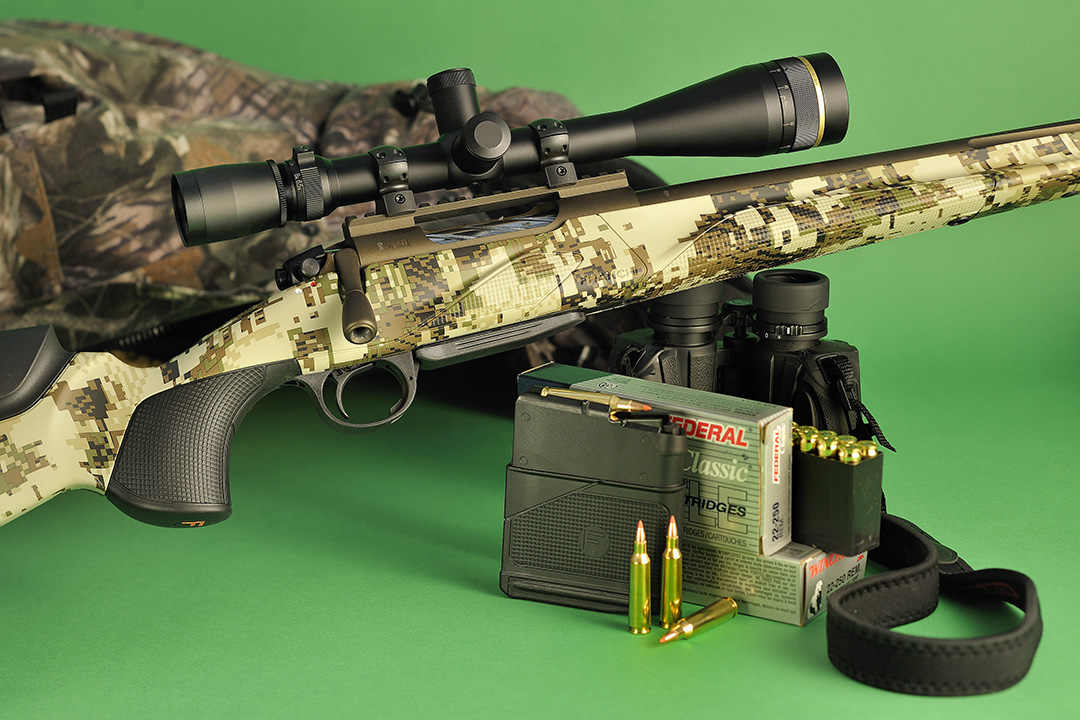
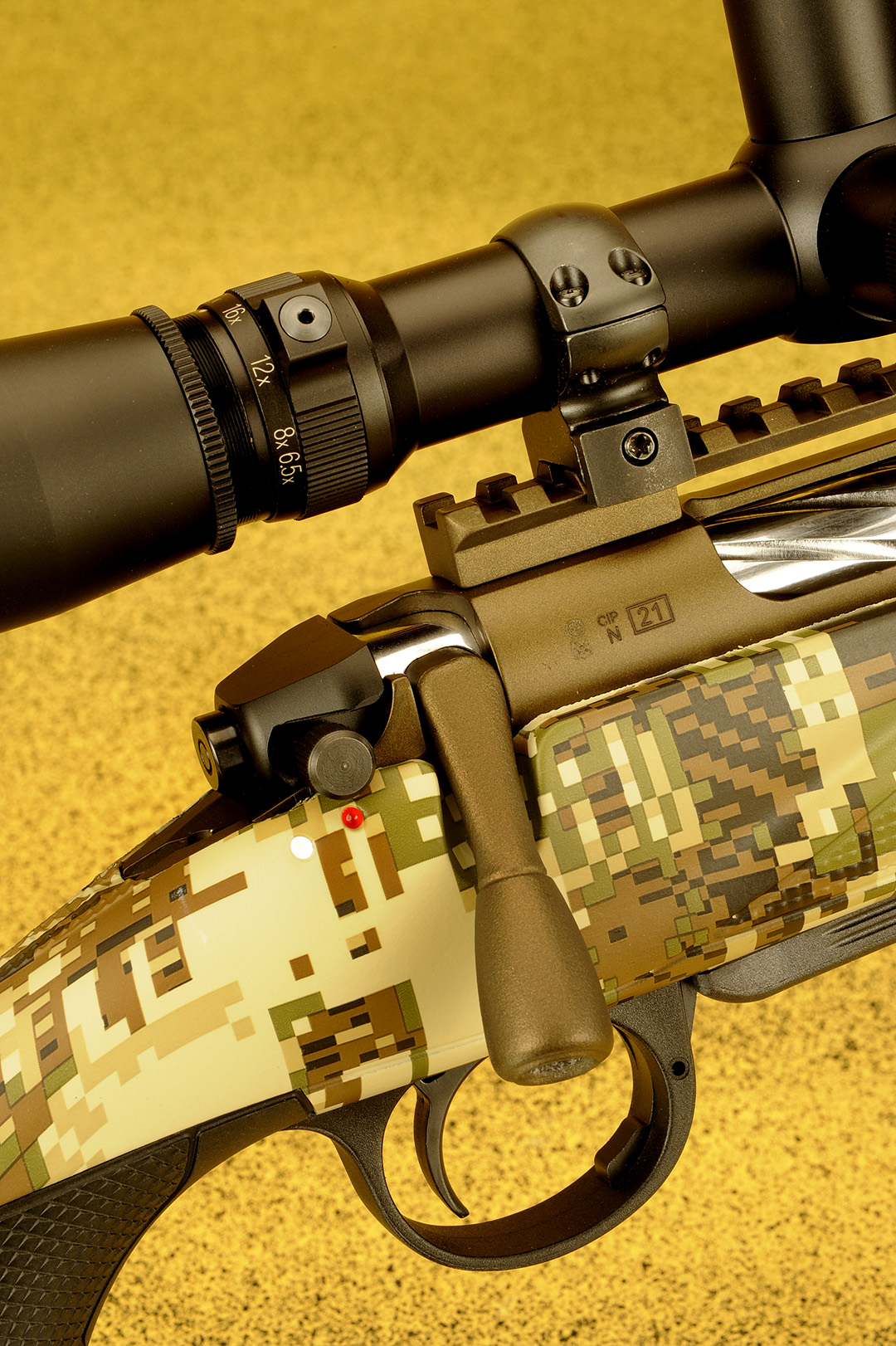
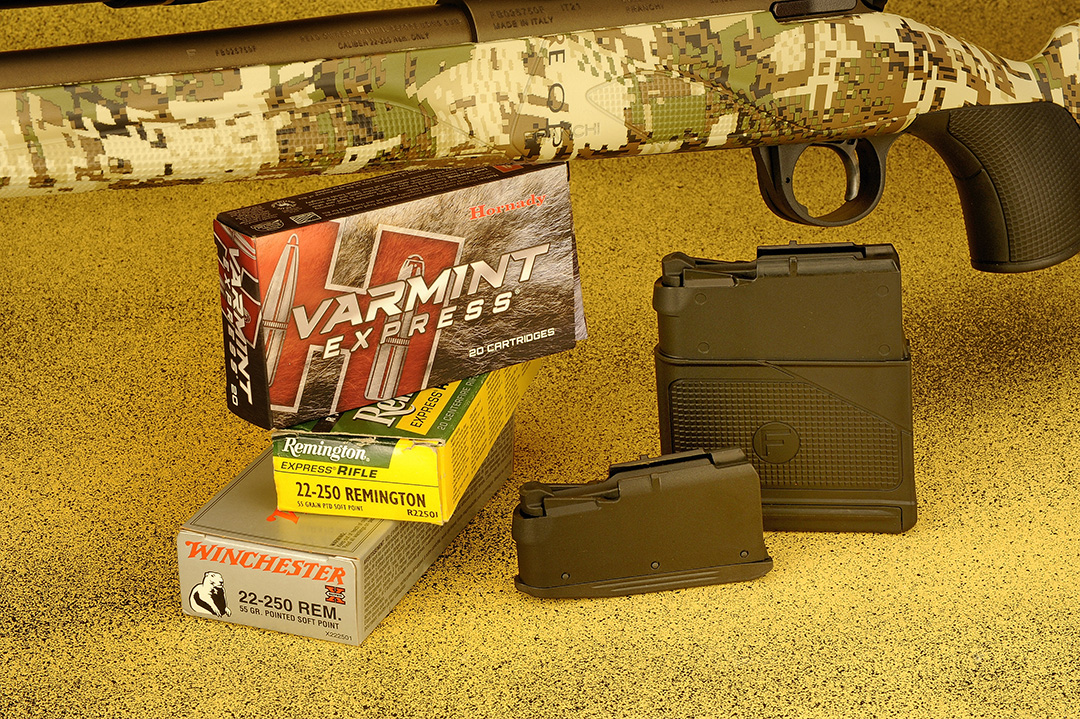
Franchi took the high road when it introduced this Momentum Elite Varmint rifle. Built on the Momentum action, they wrapped a gun around this and came up with a varmint rig worthy of the title. From what I gather, this gun is available in five choice cartridges to suit every hunting requirement including the .223 and .22/250 Remington, .224 Valkyrie, .308 Winchester and the .6.5 Creedmoor. My sample came in the .22/250 Remington and between it and the gun and accessories; I was more than pleased with this combination.
Following the success of the original Momentum rifle, Franchi is now enlarging the line with such products as this Elite varmint variant and when held in my hands, it is indeed impressive. The action is set into a synthetic Evolved Egonom-X stock they call Optifadetm Subalpine in color with a pattern that blends into the immediate surroundings perfectly. Traditional varmint hunters might look at this stock with some hesitation, but working with this gun, all of the accessories or design features come into play nicely including this modernistic camouflage stock.
While I would not classify this gun as a “walking” varmint rig at just over 8 pounds, I know it will be a great gun once it is settled into a glassing and shooting position. Over the eons of varmint shooting, the heft of a gun can make a difference of how I weather the end of the day on my shoulder, especially when it comes to prairie dog shooting. In any event, the forearm has been flattened out to serve as a rest, no matter what surface comes available with the muzzle end of it tapered for easy access through the brush. Each side of this has finger grooves and an aggressive checkering pattern allows for a good purchase of the weapon even with heavier field gloves on, not to forget the flush fitting QD sling sockets installed on both the front and rear of the stock.
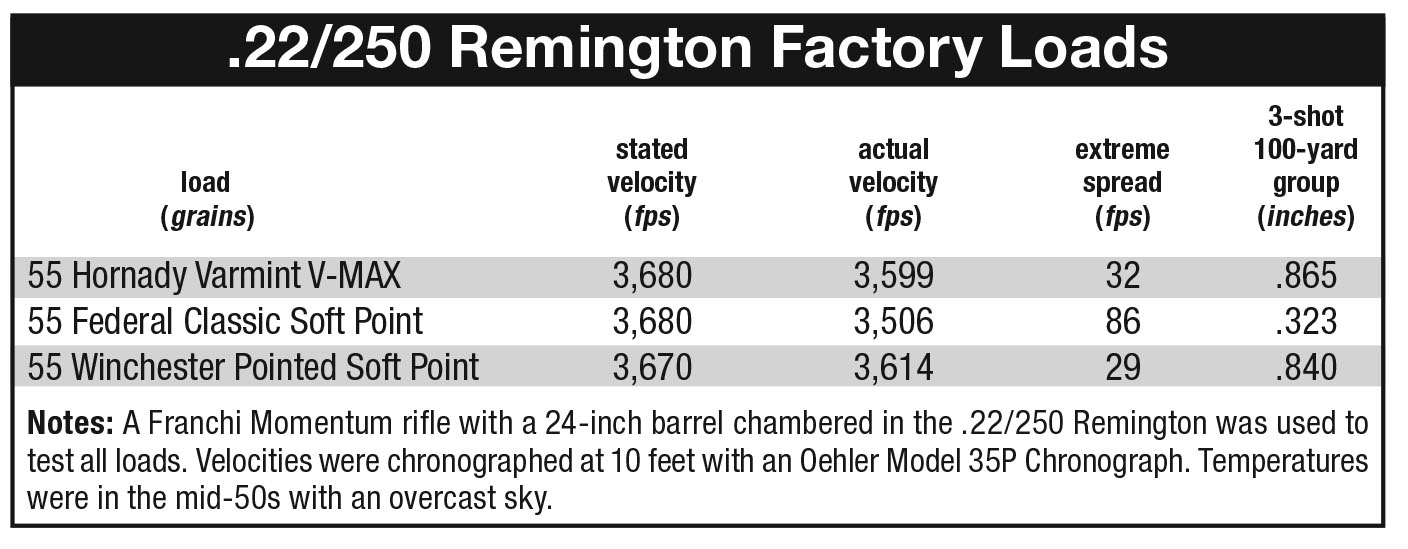
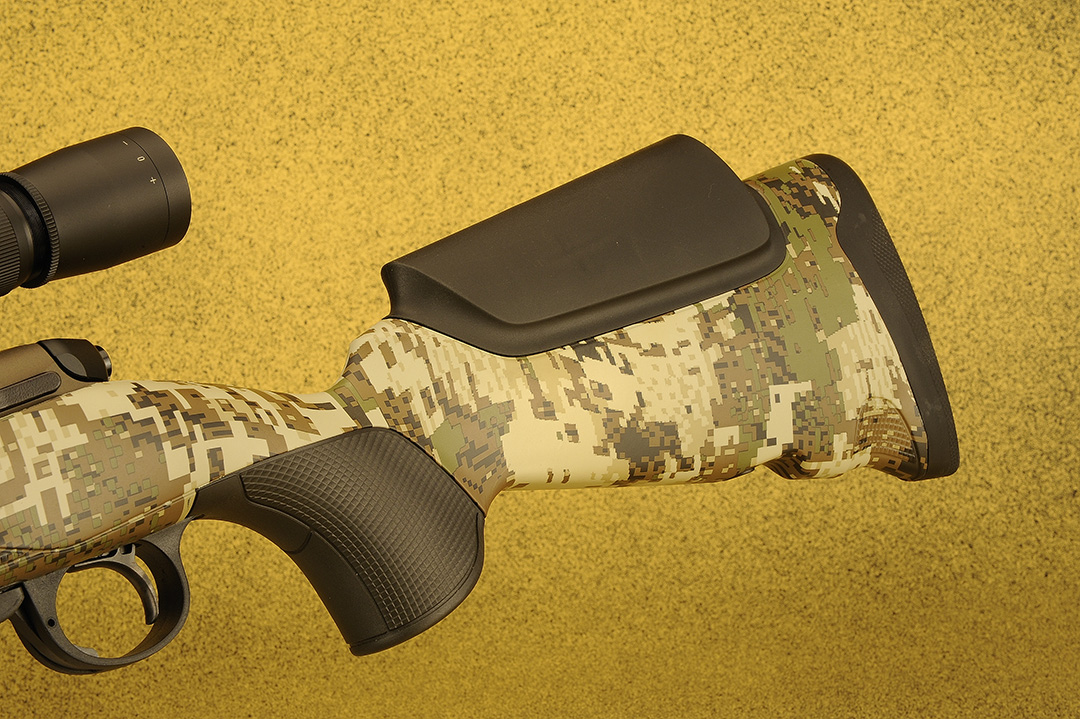
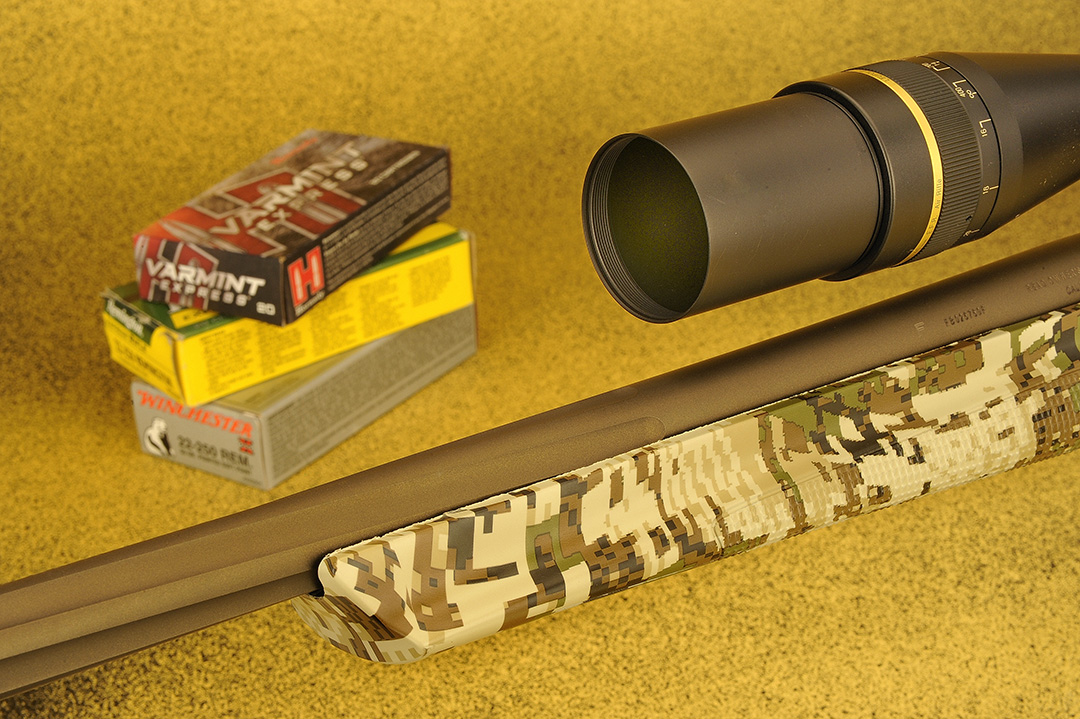
Like the pistol grip, the cheekpiece can be lifted free of the stock to allow the removal of the bolt. Interesting to note is that with any cartridges other than the .223 Remington and .224 Valkyrie, this cheekpiece has to be lifted out to remove the bolt. The rest of the cartridges on the list seem to fit into the long-action category, thus allowing the bolt a limited amount of travel to the rear, hence a need to lift this part of the gun out of the stock for clearance. Removal is easy – just lift the back of the comb, then pull it slightly back and out of the stock. For me, the height of the comb allowed me to center my eye right on the reticle of the scope, if that does not work for you, various ring heights would surely cure the problem.
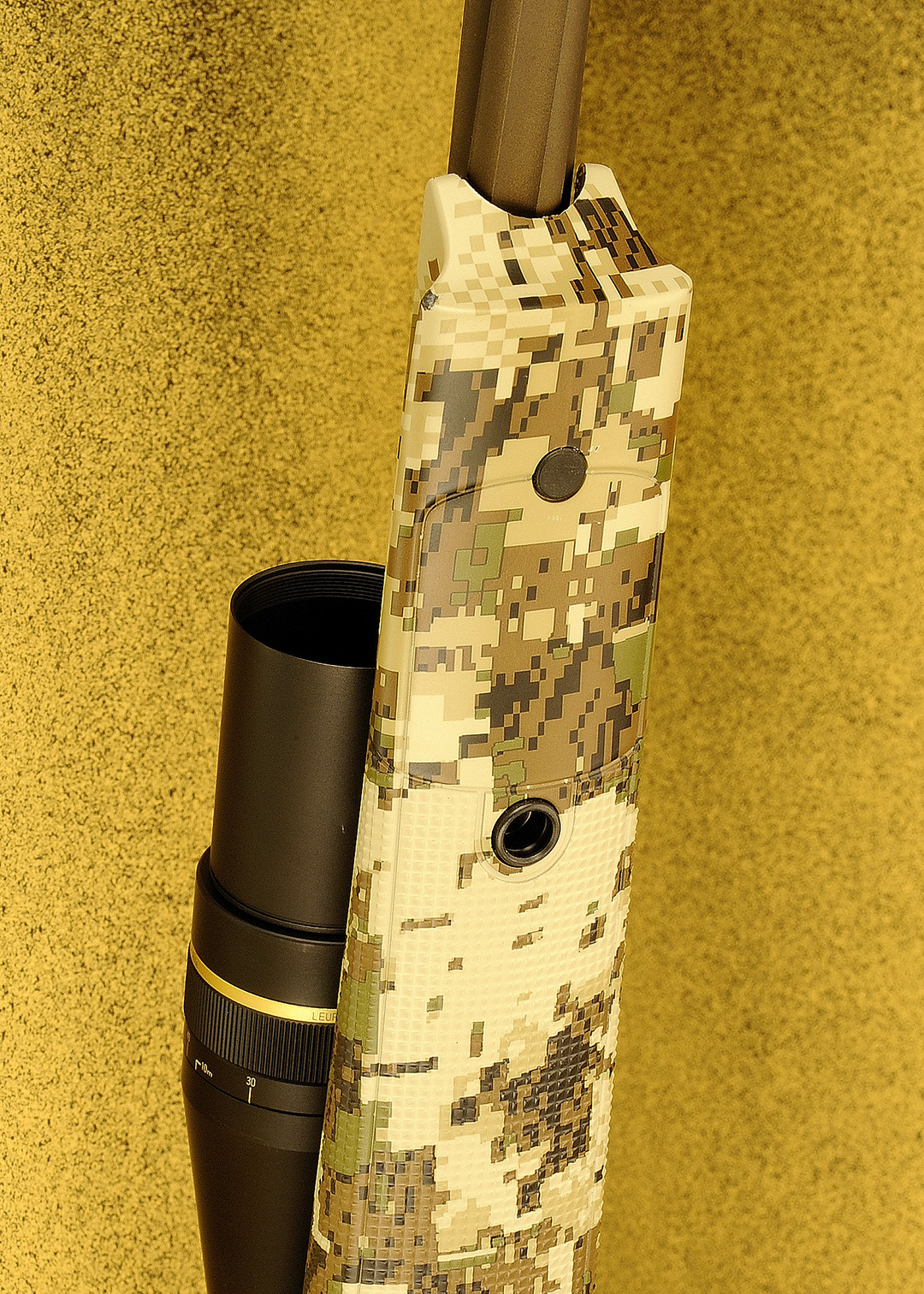
The action and 24-inch barrel are finished in a Midnight Bronze CERAKOTE for durability and weather resistance. The barrel has fluting starting about 8 inches forward of the receiver, and measures .870 inch in diameter just behind the screw on muzzle brake, which then places it as a medium heavy barrel well suited for varmint shooting. If a shooter does not care for the effect of a muzzle brake on their gun and they want to remove it, the rifle comes with a screw on barrel protector for field use. Well suited for the small-game hunter and his quest for accuracy, the barrel is free-floated back to the receiver. At this point, Franchi has certainly joined the modern age in rifles by installing solid bedding points under the action including a V-block arrangement under the front bridge and cross members within the stock for rigidity. Overall, the inletting of the stock to the action is nothing short of perfect as I could almost say the stock was poured around the action before both were put together.
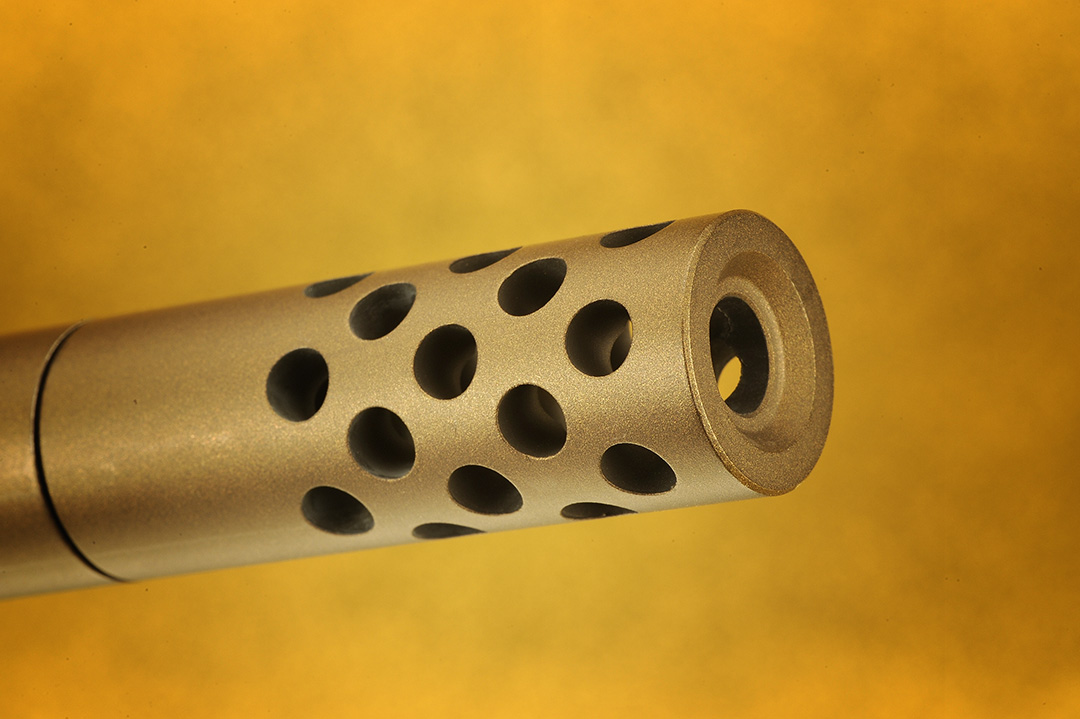
When it came to the chromium molybdenum receiver, apparently Franchi held nothing back. For the .22/250 cartridge, it measures 6.75 inches from the barrel juncture to the end and if I include the bolt shroud, I can add another inch. Included on the receiver is a factory-installed Picatinny rail to which I added a Leupold 6.5-20x 40mm scope complete with extended target windage and elevation adjustments and a factory lens hood. Mounted in medium height rings, and centered on the ejection port, this arrangement offered more than enough clearance of the objective lens over the barrel as it can be rotated for distance.
To remove the bolt on the long action, one must first remove the cheekpiece as mentioned before. To me, the bolt is a work of art in both fit and finish. Being chrome plated, it literally floats in and out of the receiver and is complimented by spiral fluting matching the appearance of the barrel. Bolt lift is 60 degrees; is push feed in design and has a hefty bolt diameter from the bolt knob to almost the three locking lugs of .860 inch, almost matching the circumference of the barrel. Up front on the bolt face, a sliding type of extractor and a plunger-type of ejector assure flawless chambering and extraction of the spent cartridge. The bolt knob is tapered and hollowed out, while the bolt handle has a subtle swept back appearance to it. Like the rest of the action, the bolt handle, knob and shroud are coated in the same Midnight Bronze coloration.
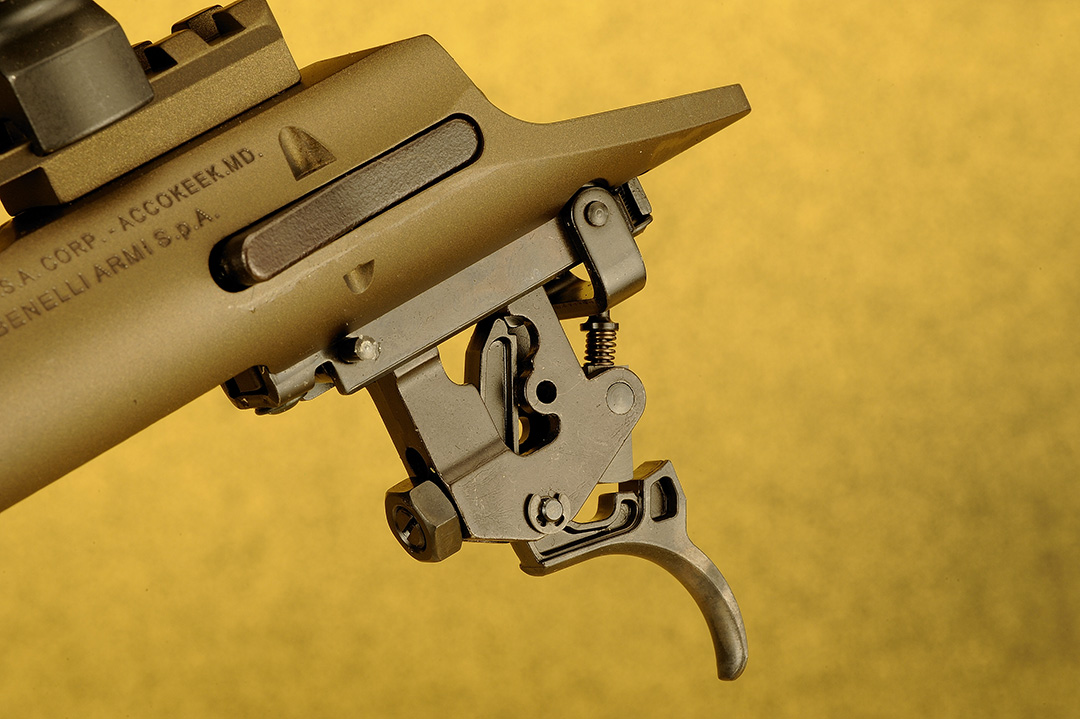
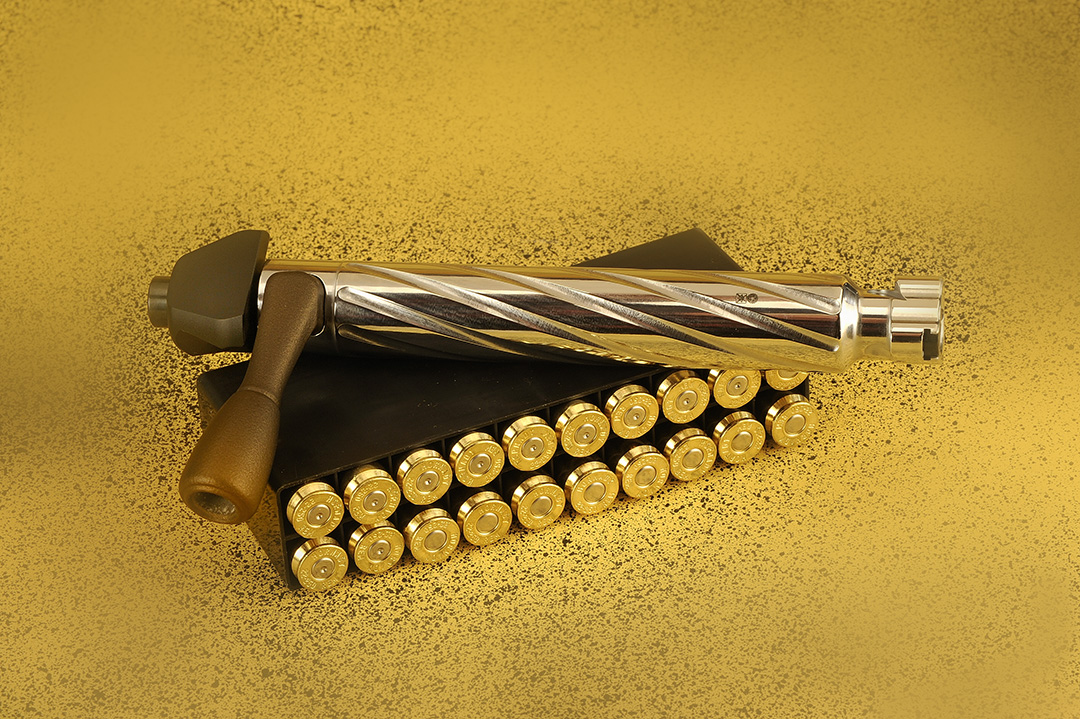
With the threats of lawyers now seemingly on the sidelines when it comes to triggers, more and more rifle manufacturers are offering guns with safely adjustable triggers, however some with a catch when it comes to the consumer. Franchi has matched this following with what they call a Relia Trigger that is adjustable from 2 to 4 pounds; mine out of the box hit 2½ pounds on the nose with just a touch of take-up, so it stayed there for testing. Following all that, their instruction sheet noted, “This setting can be modified only by the gunmaker or any authorized gun dealer.” Maybe not so much for the consumer, but perhaps Franchi’s statement could be for self-protection against the misguided individual who might do things the wrong way.
My sample Elite was chambered in the .22/250 Remington. Offhand, I can’t tell you how many rounds or guns I have used with this cartridge over the years for hunting, testing or reloading chores. The father of the round seems to be Jerry Gebby back in the 1930s when he took the .250 Savage and necked it down to .22 caliber with a shoulder angle of 28 degrees and added the name “Varminter” to the round. Remington started with the commercial production of the cartridge in 1965 followed by Winchester two years later.
A long-range varmint round for sure, it soon eclipsed some of the small cartridges like the .222, .223 and for my use, I found favor with a good powder, large rifle benchrest primers and 55-grain bullets. Back then, my favorite rifle in the field was my Ruger No. 1 that I purchased in 1976, and today, is still capable of some dime-sized groups at the favored 100-yard range without any modifications of the stock or action. Nearly 50 years old now, the gun handles like a dream and with the action and trigger worn-in; it is a pleasure to take afield.
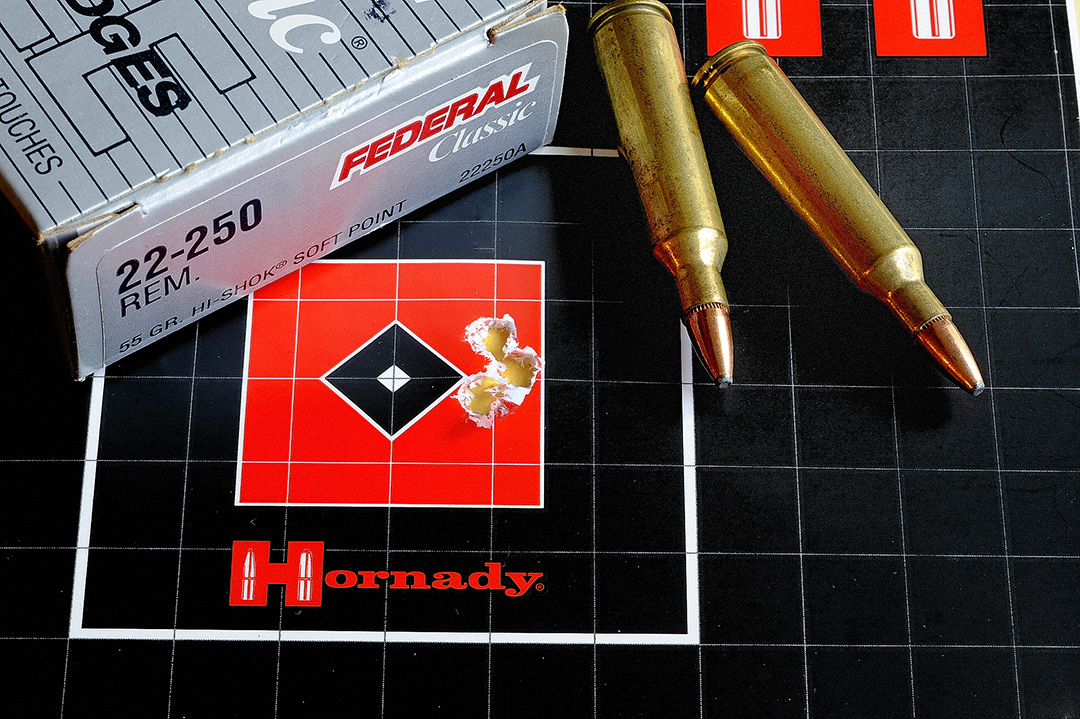
With this in mind and with new ammunition absent on store shelves, I picked factory ammunition from my stock supporting the 55-grain bullet to include Hornady’s Varmint Express, Federal’s all-time Classic and Winchester’s Pointed Soft Point. While all started out with a factory velocity of around 3,650 feet per second (fps) out of a common 24-inch barrel, all showed a horse of a different color in real life. The slowest of the bunch was Federal’s at 3,506, then the Hornady brand at 3,599 with Winchester’s taking the medal at 3,614 fps.
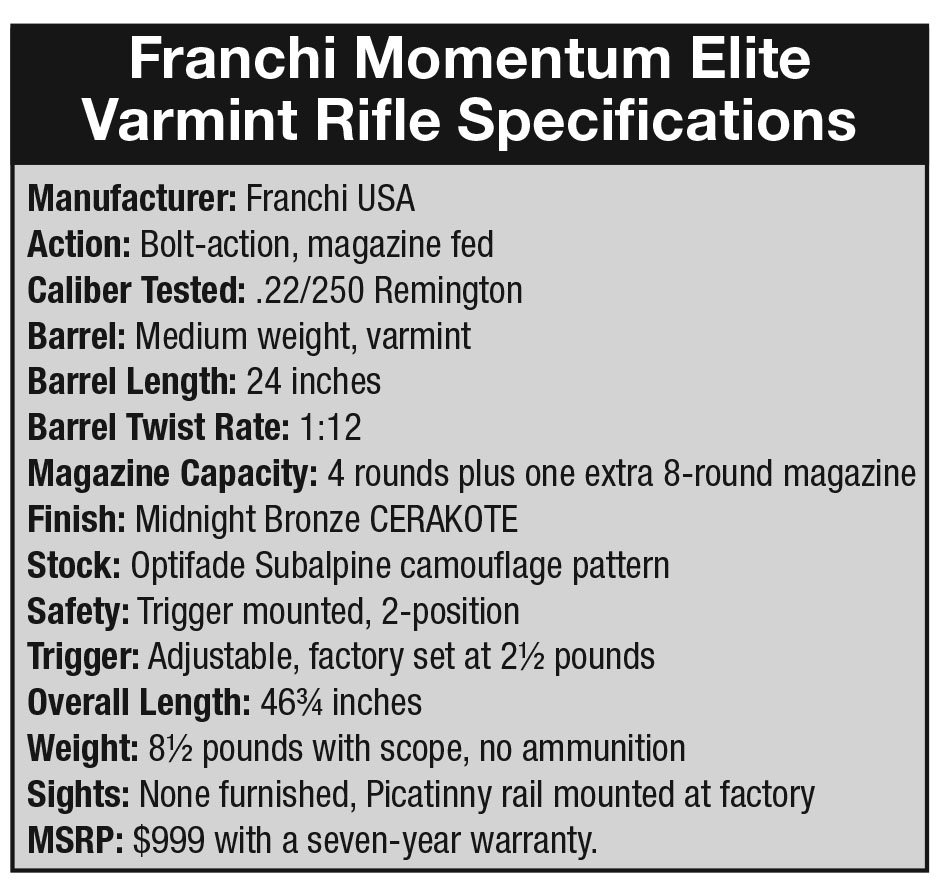
When it came to groups, this Franchi is not far away from the best I can get with a varmint gun and considering I was using factory and not reloaded ammunition, I was pleased. For example, going down the list, the best Hornady three-shot sample printed .865 inch, the Federal hit the mark with an incredible .323-inch cloverleaf pattern and finally, Winchester’s Power Point came in with .840 inch.

On the bench, this rifle handled well, which should be the case in the field. On the plus side, the gun is slightly heavy, and with the muzzle brake – not that this cartridge is a shoulder breaker – was more than comfortable for the duration of the morning. Once settled in, the gun and I became friends and with the small under minute of angle groups and it did its best to please me. Breaking it in with some choice handloads, should tighten up everything even more.
Okay, while everything sounds good, there is one item that should have been addressed during the design stage. This, of course, is the cheekpiece that has to be removed with the longer cartridges to allow the bolt to travel back and out of the receiver. Overall, I like the gun as a pure, dedicated varmint gun worthy of the price, the seven-year warranty and the accuracy it can (and will) deliver, plus the thinking on the part of management with regard to chambering the gun in the .223 Remington, .22/250 Remington and the .224 Valkyrie. For all, it’s a win-win situation.
The Franchi Momentum Elite Varmint rifle. A new gun on the horizon – soon to be an old friend in the field.

